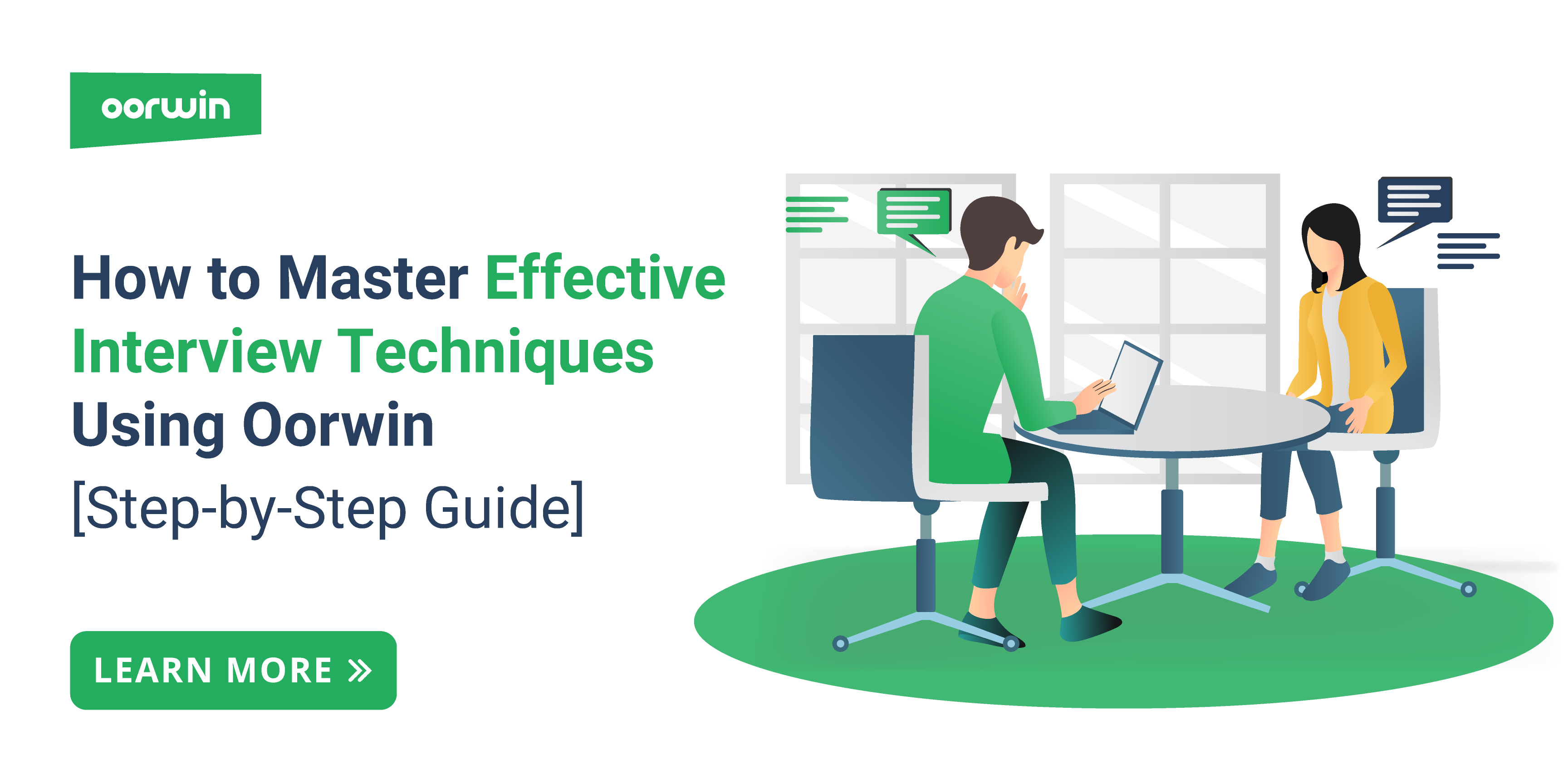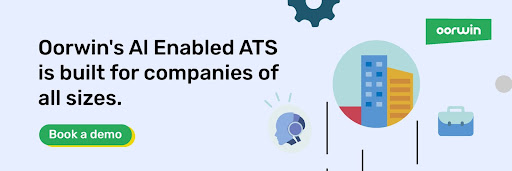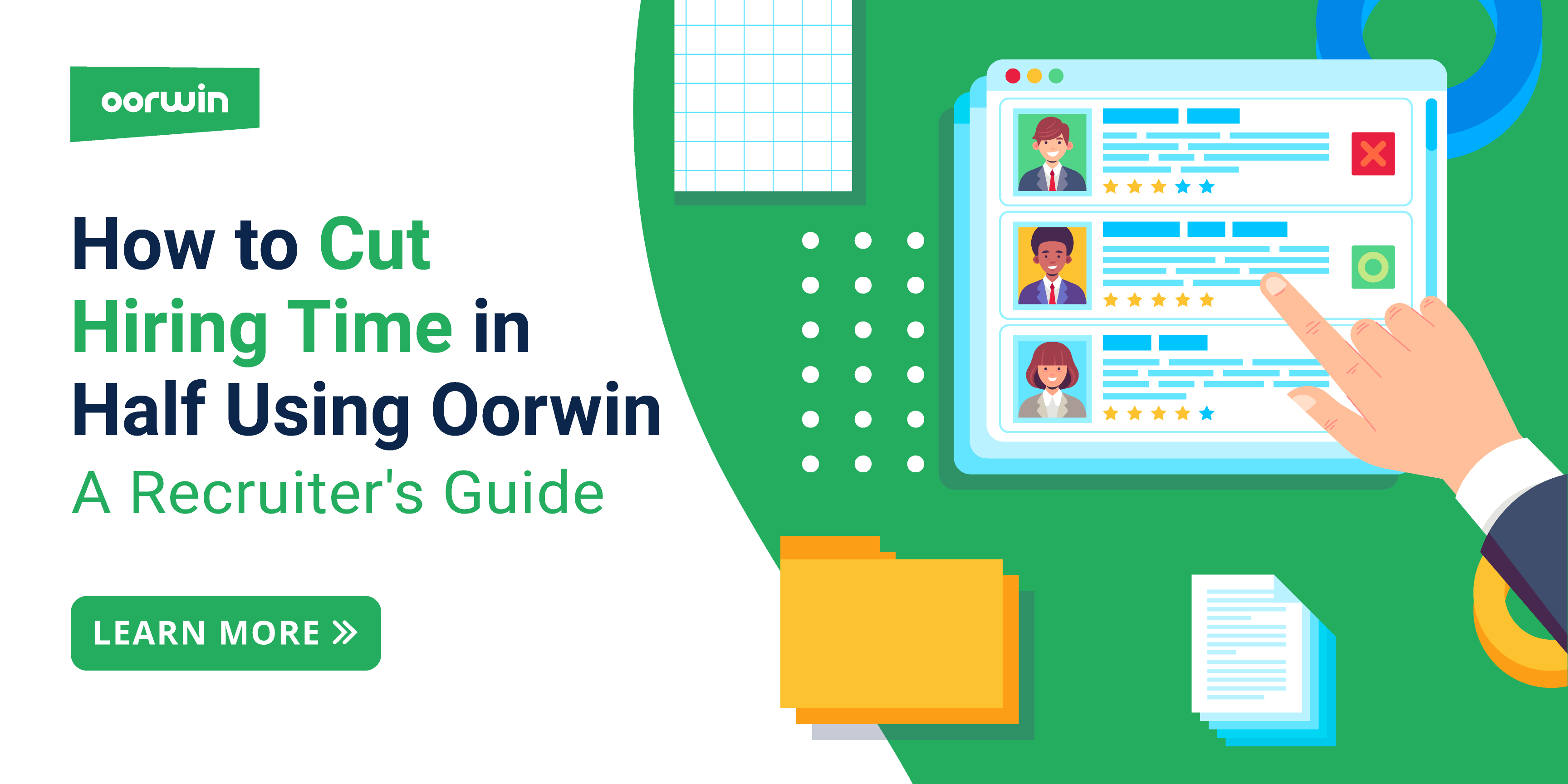Performance Review Tips for Managers: Maximizing Team Growth
Oorwin
8min read / 1 Feb 2023

Related Articles
Essential Performance Review Tips for Managers: A 2024 Guide
For managers, performance reviews are more than annual check-ins; they are opportunities to engage in meaningful dialogue about team growth. These reviews require thoughtful preparation, well-structured meetings, and focused discussions on relevant topics. In the following sections, we’ll explore valuable performance review tips for managers who benefit their teams and enhance employee engagement.
What is a Performance Review?
In performance reviews, managers take a close look at their team’s progress. They review goals, metrics, and performance indicators to assess how things are going. It’s also a chance to discuss the future – thinking about role development and professional growth plans for employees. A key part of these reviews is providing clear, actionable feedback to help team members improve. While these discussions are often in person, they can include written evaluations too. These reviews are typically scheduled on a regular basis, like quarterly or annually, to keep everyone on track.
The Significance of Performance Evaluations for Management
Performance evaluations offer a systematic approach for managers to monitor their team members’ progress. Through these assessments, managers can observe trends in employee behavior and track developmental progress over time.
These evaluations also serve as formal records of each employee’s achievements and challenges. This aspect is particularly useful for identifying standout employees, selecting candidates for advancement, and tailoring individual career growth plans.
How Performance Assessments Influence Organizational Achievement
Performance evaluations play multiple roles in fostering a company’s advancement and success:
- Maintaining High Standards: Regular performance evaluations ensure all employees adhere to expected productivity levels, growth, and quality standards.
- Encouraging Responsibility: These reviews promote a sense of responsibility among managers and their team members by providing regular opportunities to review and discuss progress.
- Boosting Engagement: Frequent reviews keep employees actively involved in their work, offering guidance, support, and constructive feedback.
- Aligning with Organizational Objectives: Through consistent performance reviews, managers can ensure that the efforts of their employees are in harmony with the company’s broader goals.
How to Conduct Employee Performance Review
Managers should follow a specific performance review technique to ensure consistent, objective, and fair evaluations. It can identify areas for improvement, reduce bias, communicate expectations clearly, and improve employee morale and productivity.
Let’s look at the steps in detail-
Step-1: Preparing Is Essential
Take time to collect all important data before the evaluation. Peer reviews, project outcomes, performance metrics, and previous evaluations are all included in this. Giving accurate and helpful employee feedback will be easier if you have a comprehensive picture of their overall performance.
Step-2: Develop Clear Objectives
Performance evaluations must always be linked to precise, quantifiable objectives. These goals offer a reliable standard by which to evaluate the development and performance of staff members. To guarantee mutual understanding and buy-in, make sure you work together while creating goals.
Step 3: Promote Self-Assessment
Encourage your employees to evaluate their own work before the evaluation. This promotes introspection and can provide important light on how people view their own performance and objectives. Additionally, it encourages a two-way discussion throughout the evaluation instead of a biased assessment.
Step-4: Positive Criticism
Feedback should always be given understandably and kindly, whether constructive or positive. Showcasing one’s accomplishments and strengths raises motivation and morale. Stay away from using derogatory language while discussing areas that need work. Rather, present them as chances for development and education. Provide employees with helpful advice and encouragement to help them become better.
Step-5: Two-Path Communication
A productive performance review ought to be a conversation rather than a lecture. In addition to asking the typical questions during a performance review, allow your staff members to share their opinions and concerns. This can give you important information about their motivations, any difficulties they may be having, and how best to support them.
Step-6: Frequent Check-Ins
Performance reviews shouldn’t be restricted to yearly evaluations. Frequent check-ins—ideally once a week—can support the upkeep of open lines of communication, prompt feedback, and problem-solving. This continuing conversation makes The formal evaluation less stressful and more fruitful for both parties.
Step-7: Record Everything
After the review, be sure to record important points, updated or new goals, and action plans. This will be very helpful in preparing for future reviews and acts as a reference for managers and employees.
Step-8: Follow Up
Evaluations of performance shouldn’t conclude with the meeting. To make sure that the employee is following through on their action plans and feels encouraged to achieve their objectives and advance their abilities, it is imperative to do routine follow-ups.
Top 12 Performance Review Tips for Managers in 2024
As managers, effective performance reviews are crucial. Here are the top 12 tips to enhance your review process, ensuring meaningful and productive evaluations for your team.
1. Learn about the Employee Positions and Past Records
For a comprehensive employee performance review, it is important to analyze each employee’s role and compare their performance to the company’s expectations. To write an effective review, a company should include data from engagement survey responses, which provide insights into employee morale and job satisfaction. It should also use information from one-on-one meetings and consider awards or recognition the employee has received to demonstrate their strengths and achievements.
The company should also use data from talent review ratings: This provides an overall assessment of the employee’s performance and potential for growth. By incorporating this data, the performance review will be more comprehensive and focused on helping employees grow and improve in their roles.
2. Apply a Structured Approach to Performance Reviews
Following analyzing employee roles and performance, the next crucial phase involves a structured approach to performance reviews. This approach focuses on setting specific goals informed by employee feedback, one-on-one meetings, and talent ratings. It calls for regular, detailed evaluations tailored to each individual’s context. This method enhances the review process, making it a tool for guiding employee development in line with the company’s goals.
Additionally, this structured approach integrates employee aspirations and company objectives, creating a pathway for career advancement and organizational success. It’s a dynamic process that adapts to evolving goals and employee potential.
3. Convey Proper Expectations and Align Understanding
To ensure effective performance review meetings for employees facing challenges in achieving goals, the following steps can be taken to match employee expectations with organizational performance criteria:
- Review the Agenda: Encourage the employee to review the meeting agenda, add topics they would like to discuss, and be aware of the time and location of the meeting.
- Prepare for the Meeting: Inform the employee of any information they should be prepared to discuss or reference during the meeting.
- Outline Responsibilities: Ensure employees understand their responsibilities and have a clear action plan following the meeting.
4. Have a Clear and Actionable Agenda
A clear and actionable agenda is a must in every performance review process. A manager will certainly want the employees to be prepared for the work review conversation, and simultaneously, the manager must prepare for the same. Before heading to the main process, have a small discussion with the employee on the main things to discuss, plan what suggestions will be for the employee, the ideal performance review questions, upcoming goals, etc.
5. Provide Constructive Feedback
Constructive feedback is essential for an effective employee performance review. Here are a few tips for delivering constructive feedback:
- Be specific: Provide specific examples and details to support the feedback rather than general statements.
- Be objective: Use facts and data to support the feedback and avoid personal opinions or biases.
- Offer solutions: Offer suggestions for improvement or solutions to any issues that were raised.
- Build a Two-Way Communication: Encourage open and honest communication by allowing employees to ask questions and provide feedback.
6. Balance Strengths and Weaknesses in Performance Reviews
Effective performance appraisals require a delicate balance between acknowledging strengths and identifying areas for improvement. This equilibrium is key to motivating employees, combining recognition of their achievements with constructive guidance for future growth. In this section, we explore techniques for managers to harmonize positive reinforcement with constructive feedback, creating an environment that nurtures employee confidence and continuous development.
Additionally, this balanced appraisal approach is crucial in building trust and openness within the team. It encourages a culture where feedback is seen as a personal and professional advancement tool rather than just a critique. Managers will learn how to communicate this balance effectively, enhancing team dynamics and individual performance.
7. Ask for Proper Employee Feedback
Companies should definitely ask for feedback from employees during performance reviews. It can be done through various ways:
- Encourage open communication to share their thoughts and opinions during the review.
- Ask specific questions about the employee’s role, performance, and work environment.
- Provide a safe environment: Create a safe and non-threatening environment where employees feel comfortable providing honest feedback.
- Encourage employees to share their feedback by actively listening and showing genuine interest in their thoughts and opinions.
- Provide anonymous feedback options for employees to provide feedback anonymously, such as through an online survey or suggestion box.
8. Gather Diverse Feedback for Comprehensive Reviews
Expand your understanding of an employee’s performance by collecting insights from their colleagues and those under their supervision. This approach is instrumental in uncovering their leadership qualities and ability to work as part of a team. Incorporating self-evaluations into this process provides a distinctive perspective from the employee’s own viewpoint, contributing to a more thorough and equitable assessment of their performance.
This multi-faceted feedback ensures a well-rounded evaluation, capturing all dimensions of an employee’s contributions and interactions.
9. Focus on Future Aspirations in Performance Evaluations
Use performance reviews as a chance to explore employees’ long-term career plans and their current role in the company.
- Ask employees about their future goals and career aspirations.
- Share your view on their ability to handle more responsibilities.
- Understanding each team member’s career ambitions is key to identifying emerging leaders and providing focused feedback to aid in reaching their goals.
10. Allocate Necessary time
It’s important to allocate enough time for the process to ensure a comprehensive and effective employee performance review. The manager must plan to ensure both parties have enough time to prepare. A realistic time limit must also be set for the meeting to ensure all relevant topics can be covered. Distractions must be avoided, and time must be allocated for follow-up after initial review if required.
11. Create Proper Documentation
Though it is arguably the most sensitive part of the performance review process, managers often forget about the performance of the employees throughout the year. If done so, they review their work based on their current performance, which is a big mistake. A candidate’s work should be judged on his overall performance; documentation is necessary to keep that performance record. Create a document for every employee, and mark their performance reports by their behaviors, discussions, feedback, attendance percentage, etc.
12. Reflect on the Ongoing process and Work on Future Steps
Lastly, whatever the result comes out from the performance review of the candidates, always work on the ongoing growth process. If the present result is unfavorable, work on it to make it preferable. And if the results are good, then work on making it better. The key is always to be proactive in fostering growth and planning the next steps for development.
Managing Challenges in Performance Reviews
When managers face challenges or make mistakes in performance reviews, it’s important for them to address these issues directly. They should see their mistakes as chances to learn. Lets look at the challenges and the solutions to remedy them-
Challenges in managing Performance Reviews-
- Handling Mistakes in Reviews:
Managers who conduct unfair or inaccurate performance evaluations create a work environment filled with dissatisfaction and demotivation. This not only diminishes employee morale but also risks damaging the integrity and trust within the team.
- Difficulty with Tough Reviews:
Managers who struggle with difficult conversations during performance reviews often lead to ineffective communication and unresolved issues. This can create a cycle of confusion and frustration, affecting team performance and individual employee development.
- Admitting Weaknesses:
A manager’s hesitation to acknowledge their own areas of improvement can lead to missed opportunities for personal and team growth. This reluctance can prevent the development of a learning culture within the team, impacting overall team dynamics and management effectiveness.
- Lack of Skills in Giving Feedback and Conflict Resolution:
Inadequate training or experience in key managerial skills such as feedback delivery and conflict resolution can result in poorly managed team dynamics and lower employee morale. This deficiency hampers the team’s ability to overcome challenges and grow cohesively.
Solutions for managing Performance Reviews-
- Addressing Mistakes Directly:
When managers openly admit their mistakes and work collaboratively with employees to rectify them, it increases respect and appreciation from the team. It enhances the fairness and integrity of the managerial process.
- Seeking Support and Advice:
By consulting Human Resources and experienced managers for guidance, managers gain new perspectives and strategies for handling challenging situations. This approach enriches their problem-solving skills and supports a more inclusive and effective management style.
- Embracing Vulnerability:
Acknowledging personal weaknesses and areas for improvement demonstrates a manager’s maturity and willingness to grow. This action fosters a culture of continuous learning within the team, encouraging openness and collaborative development.
- Engaging in Self-Learning:
Participating in online courses and training for feedback, conflict resolution, and coaching significantly enhances managerial skills. This leads to more effective team management and communication, fostering a more dynamic and responsive team environment.
Using Artificial Intelligence for Performance Reviews
Performance review techniques for managers using AI can offer several benefits, such as objective evaluation, reducing unconscious bias, and providing a comprehensive analysis of an employee’s performance.
AI-powered systems can collect and analyze data from various sources, including work performance metrics, employee feedback, and peer reviews, to assess an employee’s strengths and weaknesses. This information can be used to provide targeted feedback, identify areas for improvement, and make informed decisions about promotions, training, and development opportunities. Additionally, AI-powered systems can help managers streamline the performance review process, saving time and increasing efficiency.
Enhancing Performance Reviews with Oorwin
To wrap up, mastering performance reviews is key for effective management. Oorwin’s tools can elevate this process, offering managers a streamlined, data-driven approach. Our platform aids in setting precise goals, monitoring progress, and delivering impactful feedback. Utilizing Oorwin’s AI-driven analytics ensures unbiased, comprehensive evaluations, aligning employee development with company goals. Embrace Oorwin for a more efficient, insightful performance review process, fostering growth and success across your team.
Frequently Asked Questions
What Are the Key Performance Review Tips for Managers?
Key tips for managers conducting performance reviews include setting clear objectives, providing constructive feedback, balancing the discussion of strengths and weaknesses, and fostering open communication. It’s important for managers to prepare thoroughly, ensuring they understand each employee’s role and achievements and align the review with the organization’s goals.
What are the four pillars of performance?
The four pillars of performance – planning, monitoring, reviewing, and rewarding form the foundation of an effective performance management system. By consistently following these pillars, organizations can effectively set goals, track progress, identify areas for improvement, and recognize and reward outstanding performance.
How Can Managers Conduct Effective Performance Reviews?
Effective performance reviews are conducted through a balanced approach that includes recognizing achievements, addressing areas for improvement, and setting future goals. Managers should use a structured format, such as SMART goals, to provide clear, measurable objectives and ensure that feedback is objective and based on specific examples.
What drives good performance?
To make employees perform well, setting goals for them is necessary. Clear them about the objectives and the expectations so they can work accordingly and help achieve goals, eventually elevating their performance.
Popular Articles..
Blog

3min read / 25-Jun-2025
Master Effective Interview Techniques with Oorwin: A Step-by-Step Recruiter’s Guide
Blog
Blog
Get the latest Oorwin releases, updates, success stories & industry news
 Back
Back


